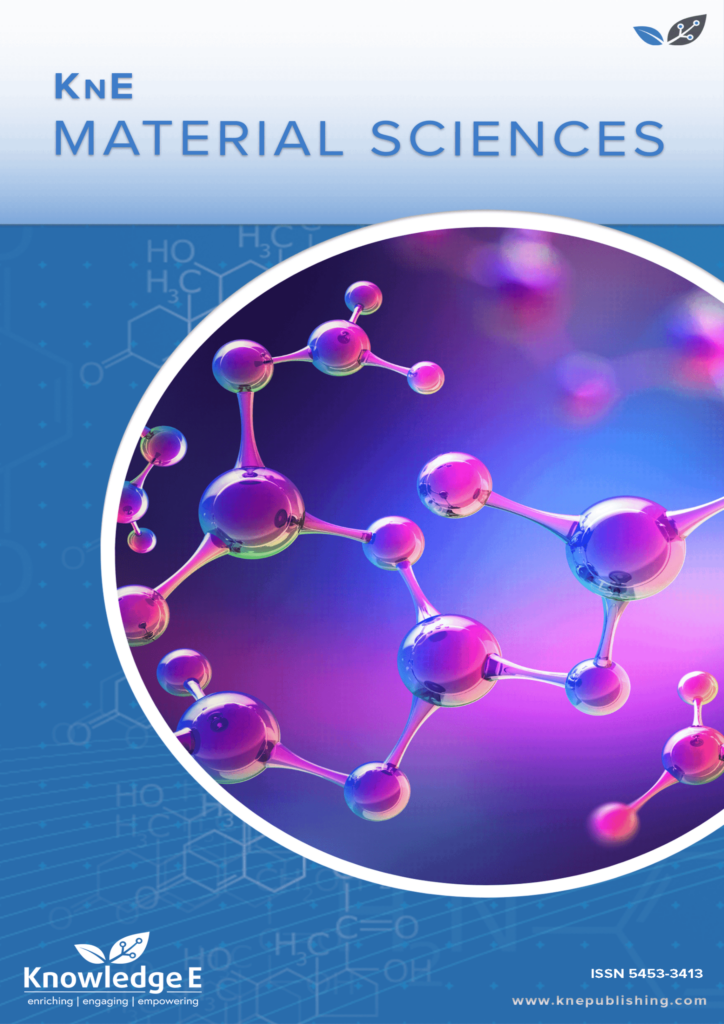
KnE Materials Science
ISSN: 2519-1438
The latest conference proceedings on physical materials, energy materials, electrical materials.
Antireflux Compression Biliodigestive Anastomoses Formation with the Usage of the TiNi Shape Memory Implant
Published date: Jul 17 2017
Journal Title: KnE Materials Science
Issue title: Shape Memory Biomaterials and Implants in Medicine (SMBIM)
Pages: 302-309
Authors:
Abstract:
The usefulness of the anastomotic device for the valve compression anastomoses formation among animals was evaluated. The implant is made of the nickelid titanium alloy (TiNi) in the form of two rounds of the TiNi wire which ends are unbent to the opposite sides. In the area of the unbent rounds the compression isn't carried out, the tissue isn't squeezed. And further there is a formation of the valve. 26antirefluxbiliodigestive compression anastomoses on the small bowel are created during the experiment. They include 13 choledochojejunostomy and 13 cholecystojejunostomy. We studied the terms of the compression devices failure, the mechanical and biological durability of these anastomoses, the primary permeability of anastomoses and carried out the microscopic examination of the compression suture. No complications connected with the use of the compression device were noted. We proved that all the valve compression anastomoses created with using the TiNi shape-memory implant are mechanically and biologically tight. The compression devices eliminated from the zones of anastomoses on the 7th-8th day after the surgery in all cases. The microscopic examination showed the insignificant development of sclerosis in the compression zone and full adaptation of all organ layers. The created valve reduced the reflux of intestinal contents that lessened the probability of development of acute and chronic cholangitis in the postoperative period. The use of the TiNi implant allows to carry out the operation twice quicker. Such anastomosis has high physical durability and small bacteriological permeability.The new way of the formation of valve biliodigestive compression anastomoses allows to create stronger and more reliable anastomoses and prevent the development of typical complications.
References:
[1] O.A. Fatushina, M.M. Solovyov, S.A. Gluchenco, Morphogenesis of seamless compression anastomosis formed from elastic NiTi implant, Siberian messenger Hepatology and Gastroenterology [in Russian]. 12-13 (2001) 207.
[2] P.I. Leimanchenko, V.F. Aliev, S.B. Azizov, A.G. Kritskih, The evolution of research projects of nickelid-titanium devices for creating compressive inter-intestinal anastomoses, Clinical medical journal. 18.1. (2016) 42-47.
[3] D. Kopelman, O.A. Hatoum, B. Kimmel, L. Monassevitch, Y. Nir, S. Lelcuk, M. Rabau, A. Szold, Compression gastrointestinal anastomosis, Med. Devices, 4 (2007) 821-828.
[4] Z.W. Jiang, N. Li, J.S. Li et all, Small bowel anastomosis performed with the nickel-titanium temperature-dependent memory-shape device, Zhonghua Wei Chang Wai Ke Za Zhi. 9 (2006) 392-394.
[5] G.Ts. Dambaev, V.E. Gunther, M.M. Solovyov, Е.A. Avdoshina et all, Shape memory implants in surgery. Atlas [in Russian], Tomsk, 2009.
[6] R. Jamshidi, J.T. Stephenson, J.G. Clay, K.O. Pichakron, M.R. Harrison, Magnamosis: magnetic compression anastomosis with comparison to suture and staple techniques, Journal of Pediatric Surgpery. 44 (2009) 222-228.
[7] T. Itoi, K. Kasuya, A. Sofuni et al., Magnetic compression anastomosis for biliary obstraction: review and experience at Tokio Medical University Hospital, J.Hepatobiliary Pancreas Sci. 18 (2001) 357-365.
[8] M. Perez-Miranda, N. Aleman, de la Serna Higuera et al., Magnetic compression anastomosis through EUS-guided choledochoduodenostomy to repair a disconnected bile duct in orthopic liver transplantation with, Gastrointest Endosc. 80 (2014) 520-521.
[9] G.Ts. Dambaev, V.E. Gunther, E.G. Dambaev, M.M. Solovyov, RF. Patent 2221502 [in Russian]. (2002).